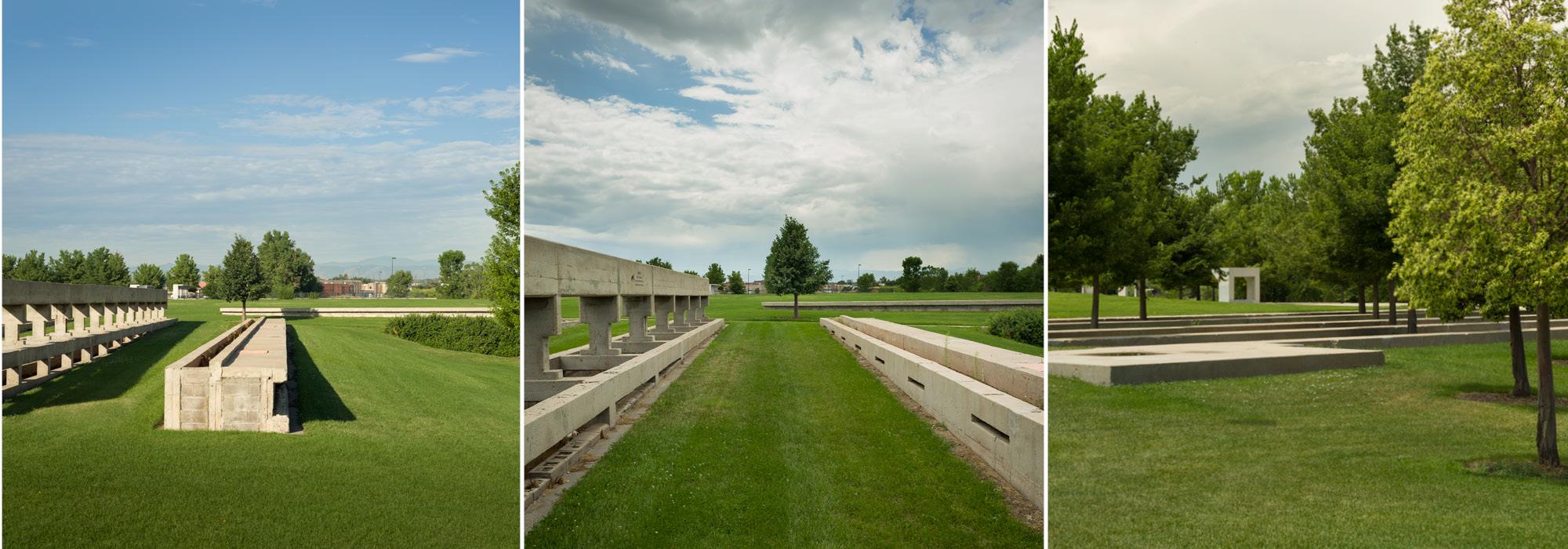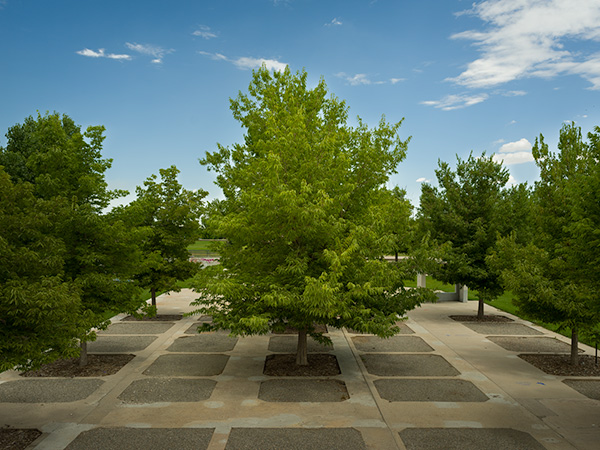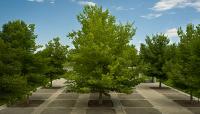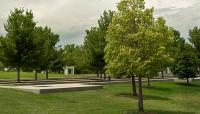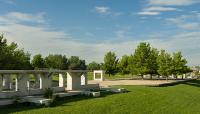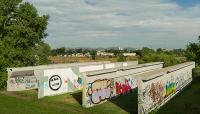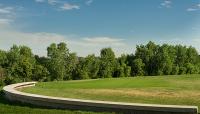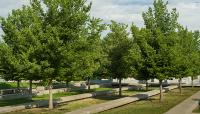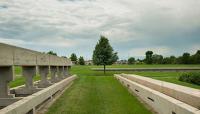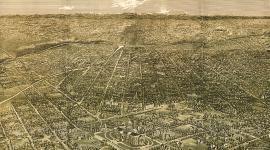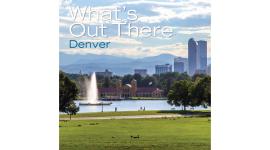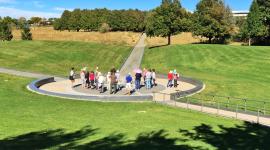Landscape Information
Situated in Denver’s industrial district, on the location of an abandoned wastewater treatment facility, this thirteen-acre park was completed in 1999. The facility, constructed in 1937, was made obsolete with the opening in 1966 of a plant farther downstream. In 1995, landscape architects Wenk Associates worked with community members to transform the facility into a park. Leveraging axial relationships found among the ruins, and working to reduce the amount of demolition required, the infrastructure was adapted to accommodate new uses. An adjacent concrete channel was removed, creating a natural edge along the park’s western side. The South Platte River, flanked by the 30-mile-long Greenway Trail, forms the park’s eastern edge.
A central axis connects the parcel’s entrance at a parking area to the northeast with a secondary access point on the southwest. Two playfields are partially enclosed by the curving structures of former holding tanks. Groves of deciduous trees frame the northeastern entrance, and remnant walls are painted with graffiti murals, providing an ever-evolving display while recalling the counterculture evident at the site before its renewal. Other remnant features are reused as seating or repurposed for their sculptural interest. A plaza comprises a grid of gravel beds, intersecting concrete paths, and a bosque of trees. Undulating topography and vegetation patterns reveal and conceal the park’s surrounding context, while quotations from area residents are engraved into sidewalks and ruins. The project received a Merit Award in Design from the American Society of Landscape Architects in 2001 for its innovative approach for a former industrial landscape.



